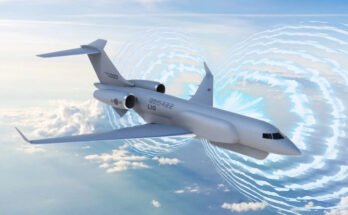by Dan Darling, International Military Markets Analyst, Forecast International.
After years spent outlining future fighter priorities and plans, formulating a tender, and negotiating with the selected competitor, India appears willing to settle for a far smaller fighter purchase than envisioned under its original Medium Multi-role Combat Aircraft (MMRCA) ambitions.
Comments made by Indian Defense Minister Manohar Parrikar on May 31 indicate that India will likely stop after a 36-unit off-the-shelf purchase of Rafale combat aircraft, a severely downscaled buy from the 126-fighter procurement outlined under the MMRCA project.
With the Indian Air Force’s (IAF’s) current fighter squadron strength at 34 squadrons of 18 fighters apiece against a requirement of 45 such squadrons post-2022, the question becomes, how does the Defense Ministry plan on filling its fighter numbers? Adding to that pressure is another uncomfortable fact: 14 of the current 34 IAF fighter squadrons are made up of aging MiG-21 and MiG-27s, which had been slated to be phased out of service by 2014 and 2017, respectively, before upgrade delays (MiG-27s) and faltering procurement projects (MMRCA and the joint Indian/Russian Fifth Generation Fighter Aircraft) forced the IAF to retain both types through 2020-2025.
Already, India operates eight different fighters, with a ninth – the Tejas Light Combat Aircraft (LCA) – still in development. These numbers do not include the Rafale, which India will procure in fly-away condition rather than (largely) build them through local Hindustan Aeronautics Ltd (HAL) after technology transfer from Dassault.
The fighter figures become even more precarious when the operational availability of these platforms is taken into account. Of the current mix of fighter types, only two – the MiG-27 and Sepecat Jaguar – have serviceability rates above 60 percent.
Defense Minister Parrikar has indicated that an answer to meeting fighter needs may come from increased manufacturing of the local Tejas LCA, or perhaps a medium-weight fighter procured through the government’s “Make in India” local production-procurement model. The latter represents more of a pipe dream at this time as the India defense-technological base’s track record with high-end technologies is hardly stellar. Meanwhile, the Tejas has not only taken 32 years to develop but reportedly will not be ready for deployment in a combat role for another five years.
For the IAF, one small ray of light came when the defense minister allowed a little wiggle room regarding the Rafale procurement by noting that another 20 of the fighters might be purchased at a later date in order to fill out three full squadrons of the aircraft. While the direct purchase of the initial 36 Rafales is, in itself, good news for the IAF, the larger procurement question comes from having enough fighters to engage on two fronts simultaneously in the event of conflict with China and/or Pakistan.
Without question, a full 126-unit procurement of the Rafale would be difficult for the Defense Ministry to absorb financially, particularly at a time when the Indian armed forces are undergoing a broad modernization. Such a purchase – even if all procured aircraft came straight off the Dassault production line – would absorb too much of the capitalization portion of annual defense budgets, crowding out other requirements in the process. Plus, India’s insistence on maximizing as much local content as possible in its defense procurement would render such a large-scale acquisition politically untenable.
So back to square one the Defense Ministry must go, with either a creative solution in mind or a willingness to invest a whole lot of money into a locally sourced solution with only a low chance of seeing a payout in the end.
For 50 years, Forecast International intelligence reports have been the aerospace and defense industry standard for accurate research, analysis, and projections. Our experienced analysts compile, evaluate, and present accurate data for decision makers. FI's market research reports offer concise analysis of individual programs and identify market opportunities. Each report includes a program overview, detailed statistics, recent developments and a competitive analysis, culminating in production forecasts spanning 10 or 15 years. Let our market intelligence reports be a key part of reducing uncertainties and mastering your specific market and its growth potential. Find out more at www.forecastinternational.com



